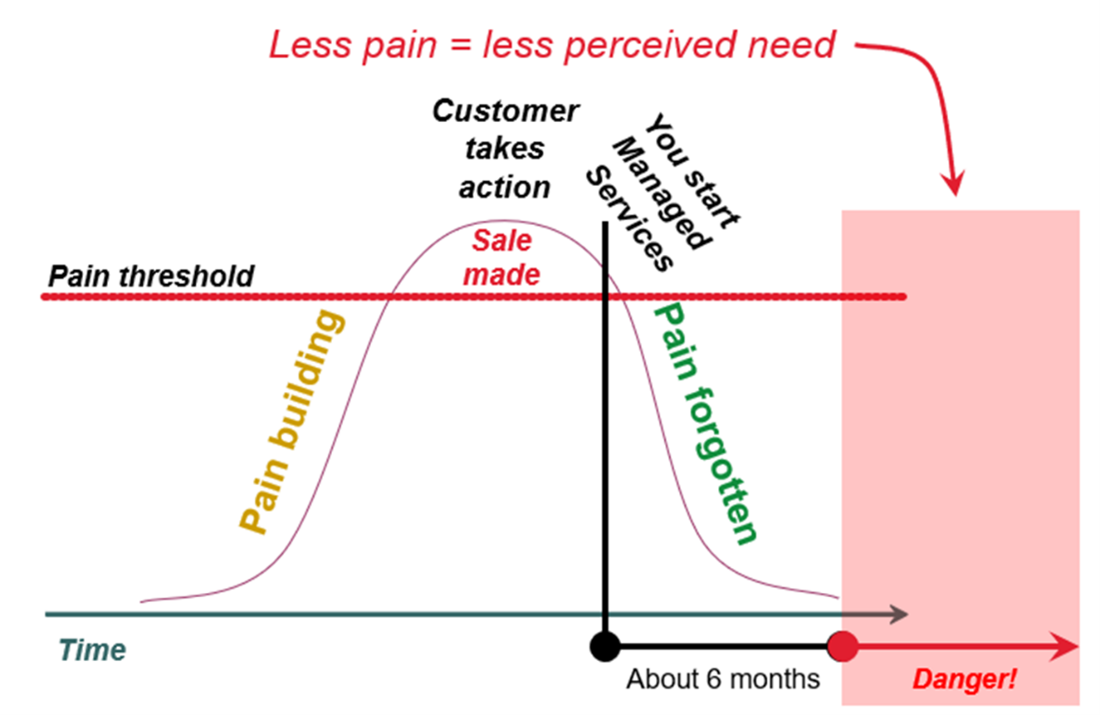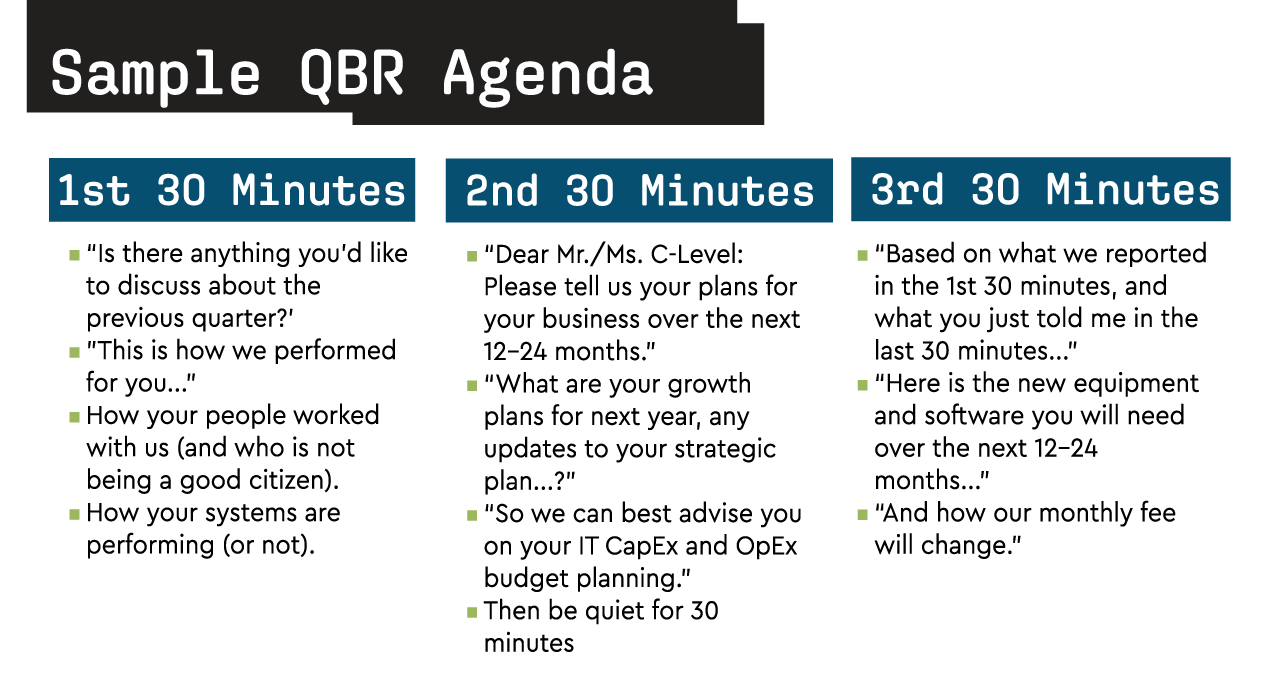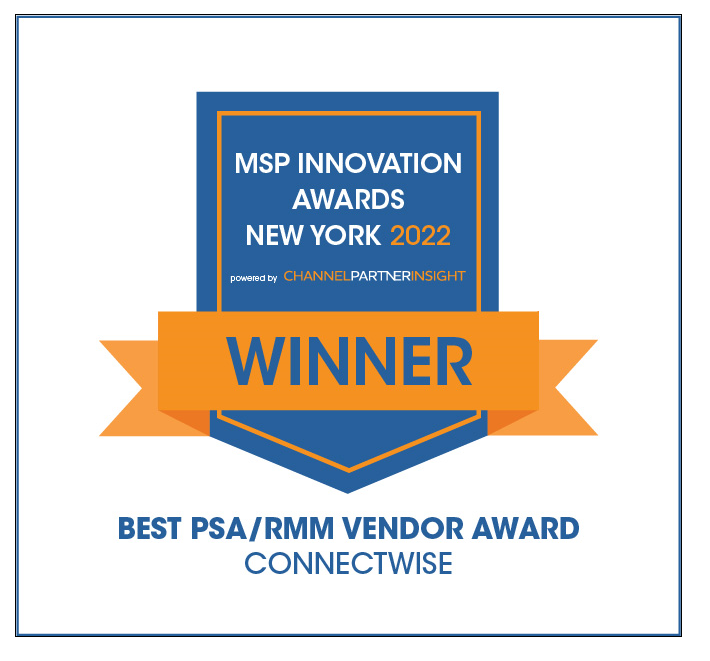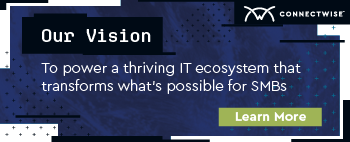8 best practices for client QBRs that increase TSP operational excellence and profitability
Top-performing firms leverage quarterly business reviews (QBRs) as a key relationship-building and management activity that directly and continually engages their customers at the C-level. QBRs are proven to keep customers engaged and satisfied because they continually connect the successful operation and evolution of the infrastructure to the company’s business goals in the C-level's eyes, creating an optimal win-win relationship.
Without QBRs, it’s difficult to:
- Differentiate your business and keep your customers satisfied
- Sell as many products and projects as you otherwise could
- Make an IT budget plan so you can deliver the highest value
- Stay relevant to C-level (they care about effective technology, not the technology itself)
In a nutshell, disciplined and effective QBRs are the backbone of high growth, high profitability, and exceptional customer experience. Let’s review how to build a best-practice QBR process.
QBRs and the customer relationship lifecycle
QBRs follow the arc of the customer relationship lifecycle. During the pre-sales phase, you’re learning about the customer and understanding their needs, also known as pain building. At some point, the pain threshold reaches a point where they’re ready to make a decision and you make a sale.
For the first three to six months, you’re onboarding the customer and talking to them regularly, which helps you smoothly build relationships. After that initial onboarding period, communication may lessen and your customer may perceive less need and potentially less value in your services. This is the time to start scheduling QBRs to ensure you stay communicative with clients. Proactive QBRs scheduling shows your attention is not an afterthought and it ensures you’re not in a position where your customer only contacts you when they have a problem.

Image: Pain threshold in the customer relationship cycle
8 QBR best practices for TSPs
Best practices aren’t 100% about providing value to your customers; you also need to gain business value. To make QBRs successful relationship builders and revenue drivers, there are several ways to start setting yourself up for success:
- Charge for QBRs
We hear from IT solutions providers (TSPs) that QBRs take a lot of time and high-level resources, making it too costly and time-consuming. Top performers know they should be paid for QBRs, and you should too. Figure out what it costs to do a QBR, double that cost to get 50% margin then divide by three and put it into your monthly costs.
Retaining a good recurring revenue customer and maximizing the recurring product and project revenue is the cheapest way to grow your company fast.
- Gain executive participation
In order to get the most out of a QBR, it is essential for executive members from a customer’s business to attend. Participation is likely to increase if an executive member from your team attends too. With decision-makers from both organizations present, each side can ensure appropriate topics and actions are discussed and take place.
Establish the expectation during the sales process that QBRs are required and C-level must attend every quarter.
- Create clear, consistent agendas
As you prepare for QBRs with your customers, keep in mind that everyone’s time is valuable. For this reason, it is important to create a clear concise agenda and communicate these details before the meeting. Not only will this allow for an effective business review, but it helps the customers’ team to prepare. They will know what questions and feedback to bring to the meeting and if they need to bring in additional team members.

Image: Sample QBR agenda
- Benchmark clients against others
Customers love to know how they compare to others in the market, so show them! This will allow you to gauge their work levels, SLAs, time commitments, and more, so you can ask strategic questions for outliers and determine how to handle support. This option will also allow you to indirectly provide negative feedback to customers without negative feelings towards your business.
- Set goals for the upcoming 90 days
Whether you have done an excellent job the past 90 days, or if you have done the worst, customers like to know things are getting consistently better. To create transparency, set some goals for your organization to meet over the next 90 days. Your organization should be held accountable, and these should be reviewed during the following QBR. This also gives you the option to provide the customer with some goals. These could be anything from supplying better information when submitting support requests to adding that additional server they’ve been holding off on.
- Don't talk about specific incidents
Restrict discussions to how to continually improve the services you provide. Discussing specific incidents can bog down the meeting and keep end goals from being reached. If specific incidents come up, request that more information be sent to you team for follow up after the QBR meeting and reassure the customer that action will be taken.
Additionally, don’t get bogged down in the data. If the QBR becomes focused on statistics, you’ve lost the C-level.
- Expect and be open to honest feedback
Always help your customers feel comfortable communicating honest feedback. It can often be difficult to hear your company’s downfalls; however, this type of honesty can show you the path to improvements in internal process and customer experience. Make sure your team is prepared for feedback and train them on how to accept negative feedback. A change management process is an excellent way of handling feedback from customers.
- Be prepared and know the customer
Before showing up onsite for a QBR, appropriate steps should be taken by the team. They should understand the ins and outs of the customers’ business, the services they receive from your organization, the billing details, and the details they will present to the customer. They should also review the goals from the previous QBR for both your organization and the customer. This will help with possible sales opportunities that may arise.
Use customer ABCD analysis
QBRs also provide you with a great opportunity to do a client ABCD analysis and look at overall revenue from clients and your revenue concentration and upside opportunity. Categorize clients as A, B, C, or D depending on their overall revenue contribution:
- A customers: These are your top clients. They are in your target customer profile and on your full technology stack. It’s imperative to stay engaged and be sure you are connecting with them through QBRs.
- B customers: These clients are consuming a majority of your service offerings but not all. Do the work to move them to A.
- C customers: You are making a little money on them, but if you can boost their pricing or get them on a technology stack, they will be easier to move up to B and then A customers.
- D customers: Delivering less than 30% services gross margin. This is the breaking point. For any customer below 30% you’re losing money. They are difficult to support, and you are not making money. Moving them up will make them easier to work with.

Image: Questions for an ABCD customer analysis
Conclusion
QBRs are primary drivers of business efficiency and predictability for both you and your customers. By aligning your advice and recommendations to your customers, you are providing high value and optimizing the chances for a long and mutually productive relationship.
How ConnectWise can help
Asses your OML SLIQ™
SLIQ is a powerful online Operational Maturity Level™ (OML™) acceleration tool for IT solution provider management teams. It uses your company’s specific inputs to determine your firm’s OML and then creates a customized action plan to help you achieve greater operational maturity and profitability.
Learn more >>
Set up QBRs with ConnectWise PSA™
ConnectWise partners, visit ConnectWise University for tips on how to use ConnectWise PSA for QBRs.
Learn more >>
Create comprehensive client reports with BrightGauge™, a ConnectWise company
Client reporting is the key to showing your clients that your services are valuable. Client reporting can increase transparency, build trust with your customers, and lower your churn rate while increasing growth.
Learn more >>
Get immediate customer feedback with SmileBack™, a ConnectWise company
Understand how your customers feel about your service with a customer feedback system built on customer satisfaction (CSAT) and net promoter score (NPS). With quantitative and qualitative customer insights, you can start using data to improve the efficiency of your operations, retain more customers, and expand the reach of your business.
Learn more >>


